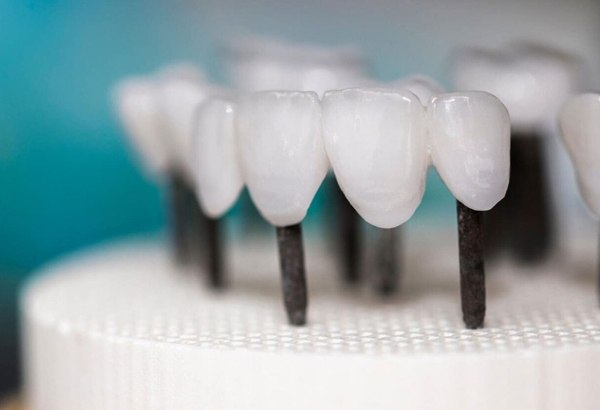EXCITING SPECIALS: Dental implants (Save $600) | All-On-4 Dental Implants (Save $3,000) | SureSmile Clear Aligner Orthodontics (Save $1,000) CLICK HERE

Implant Bridges in Palm Springs, CA
Implant Bridges: A Comprehensive Overview
Why Chose an Implant Bridge?
- Multiple Missing Teeth in One Area: If someone has lost several teeth next to each other, an implant bridge replaces them without needing an implant for each missing tooth.
- Desire for Longevity and Durability: Implant bridges can be more stable and long-lasting than traditional bridges or dentures.
- Preservation of Healthy Teeth: Traditional bridges require grinding down adjacent healthy teeth. Implant bridges avoid this by using implants for support, preserving the natural structure of surrounding teeth.
- Better Jaw Strength: Traditional bridges provide artificial teeth, but do little to strengthen the underlying jawbone. Implant bridges do a better job of preserving the original jaw profile.
What is the Implant Bridge Procedure?
The first step is consultation and planning. A comprehensive dental examination is done, which may include dental X-rays, digital imaging, and molds. Then our dentist discusses the treatment plan, number of appointments needed, and costs.
Next is the actual implant placement. Dental implants, which are usually titanium posts, are surgically placed into the jawbone. These act as the replacement roots for your missing teeth. Depending on the number of missing teeth and their location, at least two implants are usually needed.
After implant placement, a period of healing ensues, typically spanning a few months. During this time, the implant fuses with the jawbone in a process called osseointegration. Meanwhile, the dental laboratory creates your custom-made bridge.
Once the fusion process is complete, our dentist prepares the gums for accepting the new bridge. Once the gums have healed properly from this second surgery, you receive a temporary bridge that remains in place between four to eight weeks. During this time, our dentist tests the fit of the bridge framework and adjusts as necessary.
The final step is attaching your custom bridge to the implants. This might require additional appointments for adjustments to ensure optimal fit and function.
Benefits of Implant Bridges
- Natural Look and Feel: Implant bridges are designed to resemble natural teeth, offering a seamless look and feel.
- Enhanced Durability: With proper care, implant bridges last a lifetime, making them a cost-effective solution.
- Improved Oral Health: By filling the gap left by missing teeth, implant bridges prevent potential shifting of adjacent teeth. Plus, they don’t require alteration of surrounding healthy teeth, unlike traditional bridges.
- Bone Preservation: Implants stimulate the jawbone, preventing bone loss which often occurs after tooth loss.
- Restored Function: Implant bridges restore chewing and speaking functions, allowing individuals to eat and communicate without discomfort or difficulty.
- Boosted Self-Esteem: A complete smile significantly enhances self-confidence and overall quality of life.
